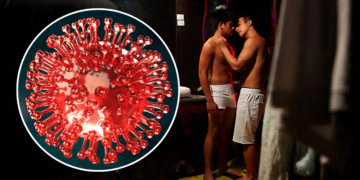OpenAI’s latest upgrade to ChatGPT, the GPT-4o model, is making waves in the world of AI-generated images.
This new version replaces the previous DALL-E 3 model and promises even more lifelike images, all thanks to a year-long effort involving human trainers who helped improve the model’s ability to follow instructions and refine its outputs.
What Makes GPT-4o So Cool?
Gone are the days when AI image generation produced clunky, unrealistic images. With GPT-4o, OpenAI has raised the bar. The model doesn’t just generate images—it creates visual masterpieces that blend seamlessly with text.
Whether you’re a business looking to design a logo, a creator trying to generate images for a project, or someone just playing around, GPT-4o’s ability to produce lifelike images is a game-changer.
The big difference here is the level of accuracy and attention to detail.
Thanks to a technique called reinforcement learning from human feedback (RLHF), GPT-4o has learned to better follow user instructions, eliminating common issues like distorted hands, misshapen objects, or errant details.
The human trainers behind the model made sure to label training data and point out those small mistakes, making it way easier for the AI to get it right.
Making Image Generation Fun and Accessible
But what’s even more exciting is how accessible this technology has become. GPT-4o doesn’t just create static images; it can now handle more complex tasks like creating images with transparent backgrounds, which is perfect for businesses and designers needing logos or icons.
You can even upload a brand style guide and ask ChatGPT to generate images that match your company’s visual identity.
This takes the guesswork out of content creation and puts more creative control in the hands of users.
In fact, OpenAI claims that GPT-4o is a game-changer for businesses, allowing them to generate stock images, social media content, and marketing materials much faster than before.
It’s like having a personal designer right at your fingertips—but without the need for expensive software or an art degree.
Still Room for Improvement
Of course, no technology is without its flaws. GPT-4o’s image generation isn’t flawless.
For example, one test showed the AI struggling to reproduce every detail of a room’s layout, like missing a window in a recreation of a living room. But even with these imperfections, GPT-4o’s progress is clear.
It’s a huge leap forward from previous models, and its ability to improve over time will only make it more useful.
Another challenge is the ongoing controversy around AI-generated art. Some artists argue that AI tools like GPT-4o threaten their livelihoods and creativity.
OpenAI has addressed this by emphasizing that its models are trained on publicly available data and by implementing policies to ensure that no living artist’s work is directly copied.
The Future of AI-Generated Art
GPT-4o is more than just a fun tool for creating quirky images. It’s a glimpse into the future of AI-powered creativity.
As it continues to evolve, this technology will likely become an integral part of how businesses and individuals approach design, marketing, and creative production.
The impact on industries like advertising, entertainment, and digital art is profound.
With AI like GPT-4o, the line between human-made and machine-made creations is blurring, opening up new possibilities for creators and entrepreneurs alike.











